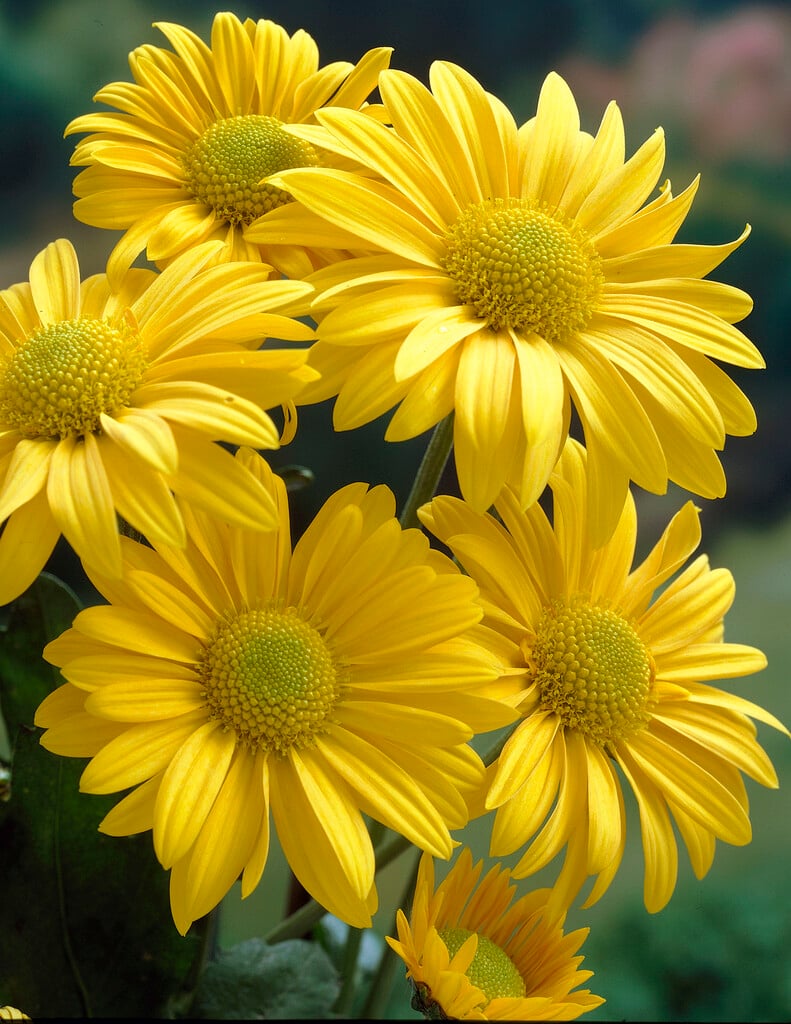Chrysanthemum indicum
Indian chrysanthemum
An upright, deciduous, perennial species, producing stems to 60cm (2ft) high on a plant 60cm (2ft) across, with deeply divided and sweetly aromatic leaves. They have a fragrance reminiscent of lemon and chamomile. Single, bright yellow daisy flowers are produced from August to October. The leaves are used for making a herbal tea, while the strongly fragrant flower heads are pickled and used as a condiment is Asian cuisine.

Buy this plant
Size
Ultimate height
0.5–1 metresTime to ultimate height
2–5 yearsUltimate spread
0.5–1 metresGrowing conditions
Moisture
Moist but well–drained, Well–drainedpH
Acid, Alkaline, NeutralColour & scent
| Stem | Flower | Foliage | Fruit | |
| Spring | Green | |||
|---|---|---|---|---|
| Summer | Yellow | Green | ||
| Autumn | Yellow | Green | ||
| Winter |
Position
- Full sun
Aspect
South–facing or West–facing
Exposure
Sheltered Hardiness
H4Botanical details
- Family
- Asteraceae
- Native to GB / Ireland
- No
- Foliage
- Deciduous
- Habit
- Bushy, Clump forming
- Potentially harmful
- Skin allergen. Wear gloves and other protective equipment when handling
- Genus
Chrysanthemum are erect woody-based perennials with aromatic, pinnately lobed leaves and flowerheads of diverse form, from late summer to late autumn
- Name status
Correct
How to grow
Cultivation
Grow in a well-drained, fertile, moisture-retentive soil in full sun. In cool regions, lift the plants in autumn, before the first frosts and store the crowns in trays of just moist compost in frost-free conditions until spring. In areas where temperatures fall no lower than -5˚C (23˚F) in winter, plants may be left in the ground and protected by a thick mulch over winter, carefully removing this in spring, after the risk of frosts has passed.
Propagation
Propagate by seed and basal softwood cuttings from overwintered stools in late winter or early spring. Cuttings should be rooted in a peat-free compost the surface of which is covered with dry sand and kept in a temperature of 16°C. Place in a cold frame after first rooting and protect from frost. Harden off in mid spring. Established clumps may be propagated by division in spring.
Suggested planting locations and garden types
- City and courtyard gardens
- Cottage and informal garden
- Patio and container plants
- Wildlife gardens
- Cut flowers
- Flower borders and beds
Pruning
Once flowering is over in late autumn, cut the whole plant down to 20cm (8in) tall.
Pests
May be susceptible to capsid bug, earwigs, chrysanthemum eelworm, aphids, chrysanthemum leaf miner and glasshouse red spider mite
Diseases
May be susceptible to glasshouse grey mould, powdery mildews and chrysanthemum white rust
Get involved
The Royal Horticultural Society is the UK’s leading gardening charity. We aim to enrich everyone’s life through plants, and make the UK a greener and more beautiful place.